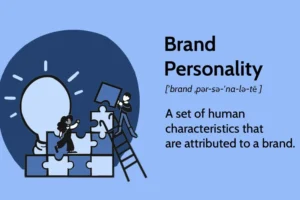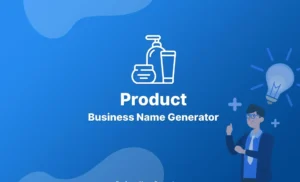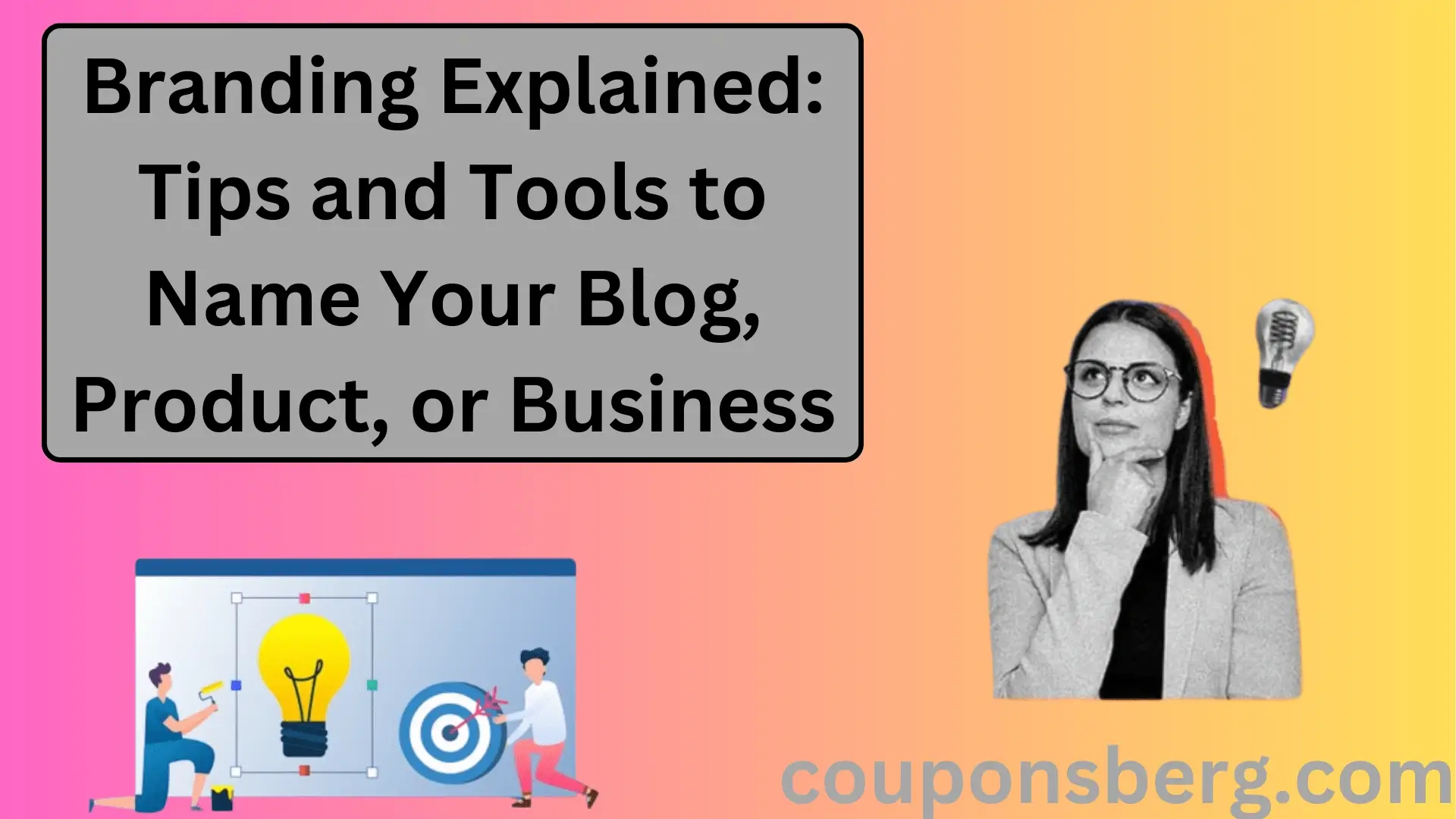Branding Explained : Most of us have heard of branding by this point. Branding has become a crucial means of identifying companies and ourselves, appearing on everything from professional resumes to social media profiles to massive enterprises.
It might be defined as an organization’s or company’s visual style and messaging, including who they target and how they communicate. While it is undoubtedly the case, branding has developed into a very sophisticated, all-encompassing approach to promoting brands and building customer communities. The need of leveraging branding power has never been greater in the complex media ecosystem of today.
What is Branding, and why is it important?

According to this explanation, branding is “the way that people perceive a company, organisation, or individual.” Brands are more than just names, phrases, logos, or designs; they are the instantly identifiable emotions that a company or product arouses.
It includes a range of crucial marketing strategies that serve to convey a message, offer goods and services to target markets, and represent particular ideals and objectives.
Effective utilisation of brands can help them impact their business and establish themselves as household names. Prominent companies such as Apple, Dove, and LEGO adeptly employ these strategies to set themselves apart from their rivals (namely, Microsoft, L’Oreal, and Mattel, in that order).
Additionally, they make sizable profits and uphold a community of devoted customers whose contentment and purchase patterns enhance the brand’s overall worth.
What is Brand value?

The ability of a brand to set itself apart from its rivals determines how valuable it is. Brands that are considered high-value may provide unique services or solutions that set them apart from competitors. Alternatively, their audience might choose them above their rivals on a regular basis and knowingly due to their strong level of consumer loyalty.
According to marketing guru Seth Godin, “the value of a brand is simply the total amount of extra money that consumers are willing to pay, or the frequency with which they prefer the memories, relationships, expectations, and stories of one brand over the alternatives.”
Consider the extraordinarily valuable brand The Walt Disney Company. The adored media company makes films and TV shows, designs and markets branded goods, runs theme parks and other attractions, and owns a number of TV networks, studios and franchises.
It would be difficult to find someone who doesn’t love a beloved modern movie like Toy Story or Remember the Titans, or an animated classic like Bambi or Cinderella. In addition, they own stock in Marvel, Lucasfilm, ABC, A&E, Lifetime, and other companies. The company claims to be worth about $150 billion.
A key component of Disney’s brand value is its vast, multigenerational, and worldwide community of devoted customers who have strong emotional ties to the company and its products. Family vacations to Disney World, binge-watching the Star Wars films, and amassing mementos like t-shirts, plush animals, toys, and books are all common consumer memories.
Disney is able to consistently charge more for its goods and products than their rivals because of this kind of loyalty.
According to a blog post by Annex Cloud about the brand’s brilliant marketing strategy, a CapGemini study revealed that 70% of consumers who engage with brands based on their emotions will spend at least twice as much money on those brands as opposed to less than half (49%) of consumers with low emotional engagement.
Disney can also rely on their customers’ satisfaction to effectively conduct some of the marketing for them. Customers that possess this emotional loyalty are engaged, consistently feel good about the business, and spread the word about it to their friends and family, according to Annex Cloud.
Disney is undoubtedly a perfect example of a mega-brand that has developed over several decades to earn its reputation. However, their enormous success highlights the importance of brand value overall: Disney’s brand outperforms its rivals by a wide margin because it offers products that have the ability to foster deep, emotional relationships.
What is a Brand Personality?

One of the most well-known quotes from Amazon founder Jeff Bezos is, “Personal branding is what people say about you when you leave the room.” To put this in perspective, a successful brand has a distinct personality with a range of identifiable features.
Consider your brand as a person, taking into account their values, behaviours, speech patterns, people they connect with, desires, and ways to stand out from the competition. You should try to capture the emotions and ideals in your brand through your brand personality.
Successful businesses aim to inspire you to have the same experience in addition to embodying their own character traits and values. With their dependable gear and goods, YETI shares with their customers their passion for outdoor experiences and adventures.
Customers are encouraged by Victoria’s Secret to indulge in some sensual pleasure with their knickers and cosmetics. Customers who visit Wendy’s restaurants are meant to feel as though they are at the family dinner table while savouring quick food with a homestyle flair.
Identifying your target customer base is just as crucial to understanding your brand’s personality. With your brand, who do you hope to attract?
What are their needs and desires? How can you build a relationship with them? What do they care about? What do they dislike? How do they speak? What are their values? Building a meaningful relationship with your target consumer is impossible if you don’t understand their personality.
How do I start to develop a brand?

Establishing the personality of your brand is a component of a bigger brand architecture. A condensed list of names, images, messaging points, goals, mission statements, and purpose are some other essential components. Where do you even begin? Creating a successful brand is a complicated and all-encompassing process. First, Column Five Media suggests determining the following:
- Goal: Why are you here?
- Vision: Which future would you like to contribute to building? How does one envision the future?
- Goal: Why have you come here? In what way is that future created?
- Values: According to what standards do you behave?
The strategy and goal of your brand may be more clearly expressed and understood with the aid of these four elements, which will also serve as a decision-making framework for any future brand details.
How do I choose a brand name?

One of the most crucial stages in making your brand a reality is giving it a name. Make sure your brand name is clear, easy to pronounce, memorable, and consistent with your brand architecture because it will probably be the first thing your target audience sees of you.
Start by jotting down the initial words or phrases that spring to mind when you consider your brand. It is best to give oneself as many possibilities as possible to think about. To help you narrow down your options for names, think about these questions:
- Is it simple to read or pronounce?
- Is it concise and clear?
- Does it align with your values, mission, vision, and purpose?
- Does it arouse the emotions you wish to project from your brand?
- Will it provide your target customer a good impression?
As you refine your name selection, consider three to five possible options. Give others who were not involved in your brand development process the opportunity to comment on your name selections. Perception is everything when it comes to branding, so putting possible names to the test and seeing what kind of feedback you get can give you a valuable idea of the character and structure of your brand.
Selecting three to five possible brand names will also be helpful when thinking about already-existing competitors. It’s possible that some or all of your suggested names are already registered, trademarked, or protected by copyright.
How do I create a business name?

A popular misperception is that a brand and a company are interchangeable. However, they all serve distinct purposes and have unique appearances. Imagine your company as a well-organized home, where each member represents a distinct brand with a distinct mission and set of values.
Your brand is the main persona that your customers will interact with. Business-to-business ties are maintained and functions on the back end of the brand in a business.
So, what is the process for naming a business? The procedures resemble those involved in naming your brand. Even so, your company name should be distinct, short, easy to read and pronounce, and clearly related to what you do.
As Fortune puts it, “The name you choose, or don’t choose, speaks volumes about your business savvy and understanding of the world you are about to enter.” This highlights the significance of this strategy. Here are some pointers:
- Go for lucidity. Keep your reader from being confused. Instead of asking them “So, what exactly does that mean?” you want to spark their curiosity (“That sounds interesting, tell me more”).
- Avert trends. Don’t rush to capitalise on current name language trends in an attempt to hold customers’ attention. No matter the era, company names ought to be comprehensible and resilient to change.
- Make a gesture in the direction of the solution’s benefit. Ultimately, business is about making things better for other people—that is, about offering products, services, and solutions. Think about making use of one of the methods
- Make it compatible with URLs. Having a website is essential for answering business inquiries and showcasing your offerings. Make sure the domain isn’t already occupied and don’t forget to think about how your company name will seem in a website URL.
- Think about your rivals. What is the difference between your company and others in the same industry? Make sure you know exactly how your company differentiates itself from the competition.
Give yourself three to five possible business name possibilities, just like you would when selecting your brand name. Try them out on your friends and coworkers to see how they are seen by them. Similarly, confirm that no one else already has your name.
How do I create a blog name?

A blog is a great method to discuss brand-related subjects in more detail, tell the story of your brand’s culture, show off your skills, and even work with other brands. In addition, it can help you maximise the possibility of converting members of your current community into brand ambassadors while also introducing your company to potential customers.
Selecting the ideal blog name is equally crucial as selecting the ideal brand and company names. Your blog must now compete on a global scale with respect to domains and content. Media is saturating users as marketers fight for their attention.
Using the same title as your brand or company doesn’t have to confine you. Nonetheless, when thinking about the perfect blog name, you should follow a similar procedure. This is one way that it could appear:
- Keep it straightforward but captivating : Aim for something that readers will find memorable but also feel good about in order to stand out in the blogosphere. It seems trite to call your blog for your vintage clothes store “Vintage Clothes Blog” if you set one up. If you gave it a quirky and memorable name, such as “Flashback Frocks,” you would differentiate yourself from other brands and represent a particular tone of voice.
- Adapt it to your target audience : It should come naturally to your blog name to address the target audience. Think about their hobbies and figure out how your blog offers them something fresh and unique.
- Remain true to your brand : It should still feel as though your blog is a part of the same company. The content, language style, and voice should all flow together naturally.
- Think about the search engine : The use of keywords is essential if you want to reach more potential customers. Your domain name will be more likely to come up in Google searches if it contains a keyword. On the other hand, you must make sure your website is mobile-friendly and that your blog is operational.
- Select the appropriate extension : You can choose from a variety of website domain extensions. The most popular domain is “.com,” closely followed by “.net,” “.info,” “.org,” and “.gov.” It makes sense for your website URL to match the industry of your business. For example, adding “.gov” would be senseless and mislead potential customers if you have a recipe blog and a culinary brand.
After going over these suggestions, it’s time to start deciding on a blog name. Take the same actions you would when naming your company and brand. Consider the following inquiries for yourself:
How do I create a Product name?

Your blog, business, and brand ultimately boil down to one important component: the product! The core of your business is what you provide in terms of products, services, and solutions. Regarding product name, the following fundamental guidelines hold true:
- Make it concise and obvious.
- Be both snappy and descriptive.
- Maintain a consistent tone of voice and language.
- Talk to the people in your demographic.
Nevertheless, product names continue to have special requirements of their own. According to Frabrik Brands, a typical error made by business owners is to think of the product name as the last stage of the venture. However, the product must take into account the following factors:
- Brand potential: Your technique for naming products isn’t isolated. Your brand image should be reflected in the titles of your products.
- Market appeal: Your product names will be more appealing the more you understand about your target market. Don’t forget to communicate in their language.
- Visibility: Ensure that it is simple to locate and search for your product online.
- Uniqueness: You don’t want dozens of other products to compete with yours. Make it distinct.
- Scalability: Will your product remain local or expand internationally? Is it a standalone item or a part of a line of products?
In light of that, the following advice will assist you as you start the ideation and naming process:
- Be both brief and detailed at the same time : Choose words carefully so that they provide an accurate description of the product itself, have implications that are related to your brand, and may have more than one meaning.
- Play with words and have fun : Product names must be distinctive and memorable without deviating too much from the main idea. Think of making inventive changes like adding a prefix or suffix, combining two words, inventing a new word, or changing a well-known word’s spelling. (Remember to keep it unambiguous!)
- Make use of verb tenses : If your product requires people to actively use it, include the function directly in the title. Think about how “text” has become a powerful noun for smartphones, or how “Hoover” functions as both a verb and a brand name. They inevitably find their way into the vernacular of product consumers.
Keep in mind that your brand’s physical manifestation is your product. The name you choose for your company should be descriptive, understandable, and simple to remember. It will act as the foundation of your enterprise.
What mistakes should I avoid?

With our target customers almost at our fingertips and access to sophisticated data and performance analysis, careful planning is crucial. Like any endeavour, building your brand will always involve certain challenges. The following are typical difficulties and pitfalls to steer clear of:
- Being hurried : It takes time, planning, input, and ongoing criticism to develop a brand. Avoid making snap decisions.
- Being unbending : Perception affects brands, and companies are there to fulfil demands. If your customers aren’t buying into your passion project, don’t hold on to it unwaveringly.
- Adoring current fads : Trends and industries shift quickly these days. Your brand will burn out with it if you’re eager to build a business on a product or idea that comes in rapidly and is sure to go out of style.
- Establishing an island out of oneself : While you’re bringing your vision to life, it can be tempting to isolate oneself, yet perception demands input. Without peer input, you don’t want to expend endless hours and energy crafting the “ideal” brand.
- Failing to set oneself out : Brands are experienced by customers in a variety of ways, including social media, print advertisements, and television advertising. Don’t forget to communicate and embodied the qualities that make your brand unique from the competition.
- Not narrowing your attention : create sure your target audience knows exactly what you have to offer when you create an impression on them so they will stay in touch.
- Disregarding your clientele : While branding is undoubtedly a creative process, the happiness of your customers is the only thing that matters in the end. Maintain contact with them, pay attention to their reactions and interactions, provide them with a special experience, examine consumer data related to your business, and don’t feed the trolls!
- Thinking too narrowly : Even while your brand will be available online for global access, it will still serve the needs of the people in your local community.
What tools can I use?
Even though branding is widely used and the competition is fierce, there are many resources available to support you at every stage of the process. A list of digital resources can be found here.
Naming your company, product, and brand:
- Thesaurus
- Shopify’s tool for creating business names
- Creator of the wordoid name
- Maker of Brand Bucket names
Support for domains:
- Namech_k domain lookup tool
- Generator for Mesh domain names
Assistance with trademarks:
- The United States Office of Patents and Trademarks
- Global Patent Collaboration
GET MORE INFORMATION VISIT ON……… Couponsberg.com
FAQS : Branding Explained
1. What is branding?
Branding is the process of creating a unique identity for a product, service, or company. This identity is crafted through elements like a logo, name, slogan, design, and overall messaging, which collectively distinguish the brand from its competitors. Effective branding fosters recognition, trust, and loyalty among consumers.
2. Why is branding important?
Branding is crucial because it:
- Builds Recognition: A strong brand helps consumers easily identify and remember your products or services.
- Establishes Trust: Consistent branding conveys professionalism and reliability, fostering trust.
- Differentiates from Competitors: Branding highlights unique features and values, making your offerings stand out in the market.
- Adds Value: Strong brands can command higher prices due to perceived quality and trust.
- Encourages Customer Loyalty: Effective branding creates an emotional connection with customers, leading to repeat business.
3. What are the key components of a brand?
The key components of a brand include:
- Brand Name: The name of the product, service, or company.
- Logo: A visual symbol representing the brand.
- Tagline/Slogan: A memorable phrase that encapsulates the brand’s essence.
- Brand Voice and Tone: The style in which the brand communicates.
- Brand Colors and Typography: Consistent use of colors and fonts to create a visual identity.
- Brand Values and Mission: The principles and purpose that drive the brand.
4. How do you create a strong brand?
Creating a strong brand involves:
- Research: Understanding your target audience, competitors, and market trends.
- Strategy Development: Defining your brand’s mission, values, unique selling proposition (USP), and positioning.
- Visual Identity Design: Crafting a logo, color scheme, typography, and other visual elements.
- Consistent Messaging: Developing a brand voice and ensuring all communications reflect it.
- Building Awareness: Using marketing channels like social media, advertising, and public relations to promote the brand.
- Maintaining Consistency: Ensuring all touchpoints consistently reflect the brand’s identity and values.
5. What is brand equity?
Brand equity refers to the value a brand adds to a product or service. This value is derived from consumer perception, which includes factors like brand recognition, loyalty, and associations. High brand equity means customers are willing to pay more for a product because of the brand’s reputation and perceived quality.
6. How does branding affect consumer behavior?
Branding significantly influences consumer behavior by:
- Creating Emotional Connections: Strong brands evoke emotions and create bonds with consumers, influencing their purchase decisions.
- Building Trust: Consistent and reliable branding fosters trust, making consumers more likely to choose your brand over others.
- Simplifying Choices: Recognizable brands help consumers quickly identify products, reducing decision-making time.
- Encouraging Loyalty: Positive brand experiences lead to repeat purchases and long-term loyalty.
7. What is rebranding, and when should a company consider it?
Rebranding involves changing the existing brand identity to better align with new goals, market conditions, or consumer perceptions. Companies might consider rebranding when:
- Market Positioning Changes: Entering a new market or targeting a different audience.
- Mergers and Acquisitions: Combining with another company necessitates a new brand identity.
- Outdated Image: Refreshing an old-fashioned or negative image to stay relevant.
- Change in Values or Strategy: Reflecting new company values, vision, or strategic direction.
- Legal Issues: Addressing trademark disputes or other legal challenges with the current brand.
